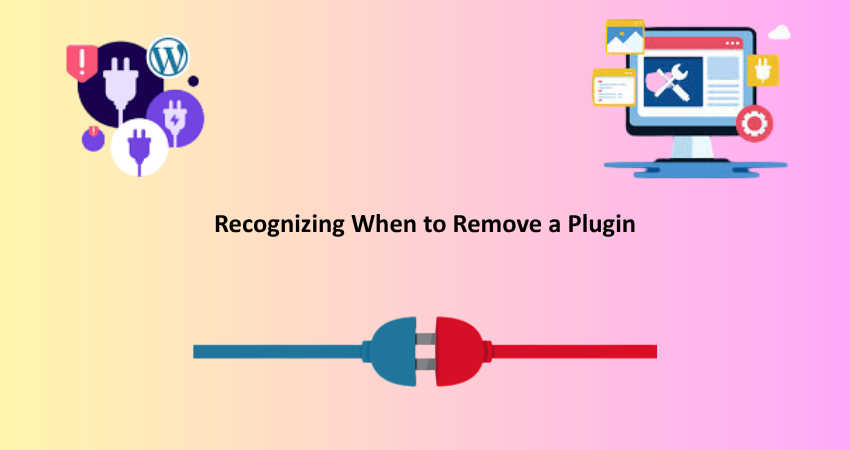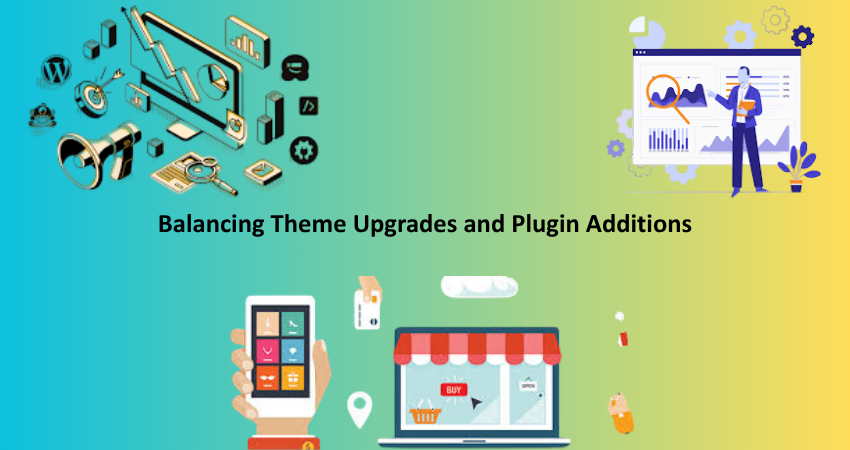
Introduction
Website management demands continuous evaluation and change. More important than anything, the very day an upgrade to a site’s theme or the addition of a new plugin will be beneficial to the website is also one of the most critical decisions the owner will ever face. While theme and plugin upgrades can bring significant change to the functionality and look of the website, they often bring with them threats such as compatibility issues, security exploits, or performance downgrades when carelessly done. So knowing the right time for these changes could make the difference between an enjoyable user experience and a nuisance on the digital map.
Website themes determine the layout, style, and overall aesthetics of your site, while plugins assign functions that allow a very simple site to become alive with multi-features. Both are very important in the construction and scaling of any website, but making an update without a strategic foundation can cause such an upheaval. Whatever your site is-a blog, an e-commerce hub, or a corporate site-it is very important to understand the key signals that suggest when the theme upgrade or plugin install is genuinely needed. Hence, this article explains precisely when these upgrades are warranted and provides in-depth coverage of performance, user experience, compatibility, security, and future scale.
Recognizing When to Upgrade Your Theme
Outdated Design and Branding Needs
Another reason for updating a theme goes when the existing design itself emanates a feeble brand identity or goes against modern design concepts. The standards for web design change very rapidly; an appearance that feels outdated may evoke reactions of unprofessionalism or lack of concern. A potential visitor may judge your credibility solely on aesthetics, which can easily result in lost trust and lower conversions. A theme update could very well rejuvenate a decades-old website suffering from very small fonts, poor mobile resistance, and boring visuals and align it with current UX/UI design practices.
Realigning the theme also follows any activities associated with rebranding. Whenever there have been changes to your logo, colors, or the corporate messaging, the existing theme may not be applicable anymore. Not updating the theme to incorporate latest updates with the branding will only contribute to an inconsistent experience for users and dilute brand awareness. A fresh and modern responsive theme will show off your website’s professionalism and keep users engaged for longer, which adds value for your SEO on factors such as dwell time and bounce rate. Getting a new theme that matches the branding amplifies visual perks and practically reinforces your identity and positioning in the market.
Poor Performance and Lack of Responsiveness
Another sign that the time is right for a theme upgrade as a significant indicator is deteriorating site performance. Once upon a time, themes may have been developed years ago, and today may not optimized with current web technologies. So slow load times, inefficient scripts, and even new device or browser compatibility would not be compatible with this design. Speed is one of the most important search engine ranking factors, and it significantly affects user experience. A slow theme irritates visitors so much that they leave the site before even accessing your content or products. And if your theme fails speed tests continuously, despite all optimization efforts, welcome to switch it to a leaner, more modern alternative.
Responsive, anymore, isn’t even optional, as mobile visits increasingly become the most dominant. An alienated audience-the theme would certainly cast aside a considerable audience when they do not respond well to changes in screen sizes. You may discover layout issues, button misalignments, or texts that delete when visiting your website on tablets or cell phones-these are signs of it being an obsolete theme. A theme helping consumers have a very smooth experience across the different platforms is mobile-first designed. This not only adds a complement quality of user experience but also increases search engine optimization rankings and overall access to the site.
Recognizing When to Remove a Plugin

Redundant or Overlapping Functionality
As your site grows and changes, a few plugins may become obsolete when theme features are added or when these functions are duplicated in other plugins. Whenever tools perform similar functions, for instance, two SEO ones, or two gallery managers, the plugins can conflict with each other filtering bugs and degrading performance. Reviewing your plugin list at intervals will help identify and uninstall tools that are no longer needed. The wider advantages of installing necessary plugins include reduced chances of potential conflicts, easier site management, and enhanced load time.
Compatibility problems are further reduced in such a case. Every active plugin added forms the greater complexity at the backend of your site and a greater area for bugs. You increase stability and maintainability by consolidating functions and sticking, wherever possible, to well-supported, multi-purpose plugins. Ultimately, the time spent cleaning up decoy tools goes a long way toward making a website leaner, faster, and more secure.
Abandoned or Poorly Maintained Plugins
Using deprecated plugins can cause a lot of harm to your website’s security and performance. Unmaintained plugins could have outdated coding and not capable of working with the recent version of your CMS and, above all, could have unpatched security vulnerabilities. When a plugin has been orphaned for more than a year without any support from the developer, it is time to start looking for a different one. Read the reviews, visit support forums, and go through the update logs to see if the plugin is worth using or not.
When you switch from old plugins to actively maintained counterparts, you are guaranteed longevity in compatibility and security. Developers of plugins who actively maintain them constantly enrich their clients with timely updates, instant bug fixes, and support in case of issues related to them. Often, it requires some degree of reconfiguration; nevertheless, it brings trust and experience to customers in using it. Securing and maintaining an impeccable site goes a long way toward instilling confidence in users and ensuring that we comply with the regulatory requirements considering that we traffic in user data and financial transactions.
Identifying the Need for a Plugin
Enhancing Functionality for Growth
Plugins are key tools that extend the functions of the website without interfering with the basic structure of the website. A clear indicator that a new plugin installation is required is when the business or content goals change, thereby demanding new features not offered by the current website.Some inventory control and customer reviews will be needed in online shops; perhaps a bit of SEO or even some social media integration could be used on the above blog. Rather than go through the hurdles of custom-coding controls by hiring a developer, a good plug-in can offer the needed functionalities at the fastest and cheapest rate possible.
Expectations will only grow as the publisher’s website will evolve. Suggestions may come in for enhancements like contact forms, live chat support, multilingual functionality, or subscription services required to display premium content. Incorporating plugins that enable these functions will maximize user experience and engagement. Still, the performance and credibility of each plugin must have been thoroughly investigated to avoid complications that come with a few compatibility or security snares. Hence, a fitting plugin optimizes operations and boosts engagement, while at the same time facilitating site expansion with the audience; thus, it becomes a strategic consideration over mere aesthetics.
Security, Compliance, and Maintenance
Another compelling reason for installing a plugin is because new aspects raise maintenance, security, and compliance related needs as time progresses. As time evolves, the cybersecurity threats also and plugins with advanced security features such as two-factor authentication, firewall protection, and activity logging can actually safeguard the site from breaches and data loss. If your site collects user data, you must comply with regulations such as GDPR or CCPA. Dedicated compliance plugins can do all the automating needed for cookie consent banners, data request forms, and privacy policy updates for your site to be legally rigged.
Also, maintenance tasks like backups, activity monitoring, and database optimization can be performed by plugins easily. Relying on manual processes or outdated tools makes your site vulnerable to or is likely to incur enormous downtime. Installing good maintenance plugins gets a stable administration and reduces the administrative problem with peace of mind. If you always find yourself spending more time on backend tasks or facing recurrent technical issues, the introduction of specialized plugins would automate and optimize such functions to keep your site running smoothly and securely.
Balancing Theme Upgrades and Plugin Additions

Avoiding Feature Overlap and Bloat
It’s important to ensure a proper balance between theme upgrades and plugin additions for the reason that both of these features improve your site. However, they should be managed well so that both do not cause an overload in your site. If there is many addition of plugins or a theme trying to do it all, then performance slows down, and you may face bugs or crashes. Some of the themes contain integrated features that may already exist in your plugins. This situation may produce conflicts where the plugins and the theme take control of the same function, such as sliders, galleries, or SEO settings.
Before a theme upgrade or adding any plugin, it is prudent to perform a detailed audit of the current abilities and performance metrics of the site. Highlight essential features and determine whether they should be part of the theme or a particular dedicated plugin. Most of the time, it’s best to rely on a plugin for the specific functions and leave the layout and design purely to the theme. That way, you get much better performance, easier troubleshooting, and a more flexible position for future updates. Smart, calculated and minimal additions keep slow, user-unfriendly, and unstable websites at bay.
Testing and Compatibility Considerations
If you update your theme or integrate a new plugin without prior testing, you can create distortion in some features, generate layout issues, or even cripple your site. Compatibility becomes a very huge concern, especially when existing setups and third-party integrations encumber the website. A scenario often arises where new themes do not accept existing customizations, whereas plugins may conflict with each other or with the last version of a CMS, making it imperative to have some form of testing prior to any major change. You should utilize a staging environment to conduct previews and troubleshoot problems before live updates.
Also, it is good to consider the frequency of the updates and support offered for developers when selecting themes and plugins. Generally, tools that are regularly maintained tend to be compatible with current web standards and more often are seen as less prone to security vulnerabilities. You should also check changelogs, user reviews, and support forums for clues into the reliability of the theme or plugin in question. Any decision you make should, therefore, be informed by research and testing. An upgrade that actually improves the functionality and performance of your website is now a priority. Compatibility planning helps avoid downtime and to keep a smooth experience for your users.
Conclusion
The process of determining whether to upgrade a website theme or install a new plugin necessarily extends to the realm of strategy, with direct implications for site performance, safety and security, user experience, and added scalabilities. An upgrade may be warranted when the apposite design appears to be significantly outdated, no longer in accord with the brand, or poorly functioning on modern devices. Plugins are able to attend to the arising needs for new features, enhanced security, or easier maintenance workflows.
Intentionality is the key. Rather than impulsively reacting to a design trend or adding tools on a whim, take the time to assess your site’s present state and future aspirations. Consider: Does this theme still reflect our branding and usability needs? Does this plugin address a real problem without duplicating existing functionality? An informed strategic decision will be much less likely to result in common traps such as feature bloat or compatibility issues when backed up by performance audits and rigorous testing.
When you take a proactive and deliberate approach to upgrades, you enhance the site in ways that support a better experience for users and the attainment of your strategic business goals. Be it growth, brand refinement, or just a better user experience: how and when to make these changes will keep your site relevant, fast, and secure.